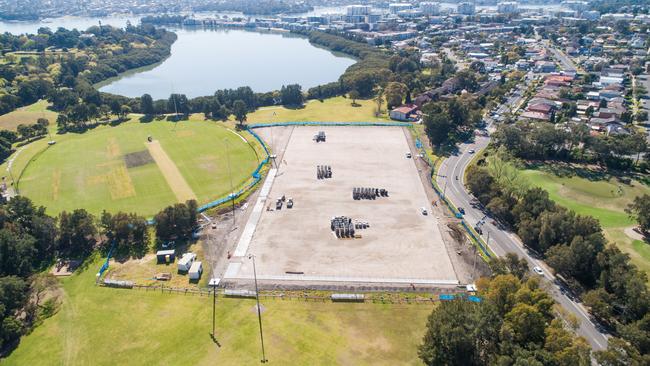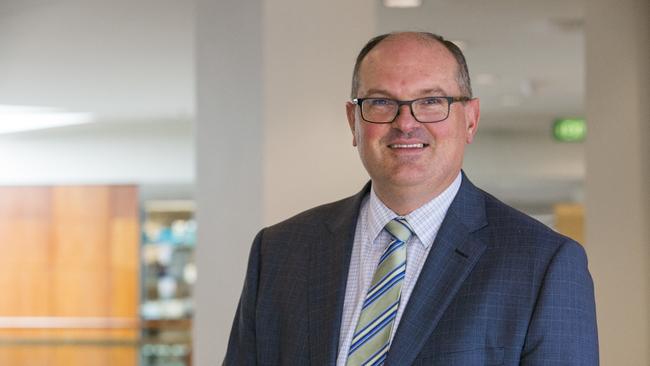Inner Sydney councils bank $589m in infrastructure funds from developers
Two inner Sydney councils have topped the list of banking the most unspent infrastructure funding of any other councils in the state. SEE THE FIGURES HERE.
Southern Courier
Don't miss out on the headlines from Southern Courier. Followed categories will be added to My News.
- NSW Public transport price changes, winners and losers revealed
- Shock move: Decision made on Mirvac plans for old IBM site
Inner city councils stretching from Randwick and Waverley to Strathfield have a shocking $589.1 million in infrastructure funds sitting in their coffers, as industry leaders plead for local government to inject the funds back into the community.
New data has revealed eastern Sydney councils have banked staggering amounts of developer contributions, with Bayside Council holding onto the most funds of any other local government area in the state — a massive $286.8 million.
Sydney City Council comes in second on the local list with $141.4 million in unspent funds, Inner West Council is holding onto $63.2 million, Canada Bay has banked $36.9 million, while Burwood Council has $19.2 million held in the coffers.
Waverley’s bank account has a cool $18.9 million, while Strathfield has collected and held onto $18.3 million. Over at Randwick, $8.1 million has been recorded as unspent, while Woollahra has just $5.9 million in the developer contributions account.

Canada Bay Mayor Angelo Tsirekas said his council will have invested $26.6 million into capital works by the end if the month, including the $5.2 million Majors Bay Reserve synthetic field and $1.46 million Cintra Park Amenities extension.
“The City of Canada Bay is thrilled to be injecting record capital expenditure into our local economy in the upcoming financial year – an estimated $61.698 million,” Cr Tsirekas said. “The COVID-19 pandemic has taken its toll on our local economy and Local Government plays an important role in economic revival.”
However, the mayor said Canada Bay had “very low levels of uncommitted funds”.
“Funds are collected over time and pooled to enable infrastructure to be delivered,” he said.
While a Strathfield Council executive said it “acquits contributions received contemporaneously and per the schedule of works in our plans”.
A City of Sydney Council spokeswoman said it actually spends more money on local infrastructure than what it collects from development.

“We have invested $220 million in the pedestrianisation of and public domain works along the George St light rail corridor, and $540 million toward infrastructure at the Green Square urban renewal area, such as the new library, aquatic centre, parks and open space,” she said. “The City of Sydney also fast-tracked capital works to help stimulate the economy and support recovery through and following the pandemic.”
Overall, councils in communities across NSW have banked a massive $2.65 billion worth of unspent developer contributions, as industry leaders call for the funds to be urgently spent in local infrastructure projects to support communities post-coronavirus.
The shocking amount of funds in council coffers across the state has been revealed by The Urban Development Institute of Australia NSW, who’s chief executive Steve Mann found a council’s banked an extra $191 million in the past year.

“The five councils who have banked the highest amounts of developer contributions are all Sydney-based, with Bayside Council holding onto $286 million, Blacktown banking $214 million, Liverpool has $160 million, while Sydney and Ku-ring-gai have $141 million and $135 million respectively.
Mr Mann said councils across the state could spend the developer contributions on local parks, footpaths, roads, sporting fields and lighting.
“These are funds that must be spent on projects to benefit the local community, so what better time to invest in local infrastructure than now?” Mr Mann told NewsLocal.

“Councils can consider these contributions as free money — now is the time to spend it.”
The UDIA NSW chief said spending the funds would result in fast economic outcomes over the next 12 to 18 months, however, councils are hamstrung by red tape and policy in “desperate need of reform”.
Mr Mann said, surprisingly, there is no clear relationship to the completion of major developments and when developer contributions are actually spent.

